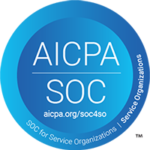We keep hearing from the industry that drug prices are now under control, even going down.
And yet, retail pharmacies dispensed a record $465 billion worth of prescriptions to American patients in 2020.
Depending on how you measure them, net prices for brand-name drugs may or may not have dropped for the third year in a row. The record 2020 spend is reportedly due to more patients filling prescriptions.
Let’s hope they’re not filling prescriptions like $4,500 “pain kits.” We’ll explain.
The fact is there are always a few egregiously priced prescription products that find their way on to formularies, but also less-obvious examples that can fly under the radar of formulary analysts and managers.
Twice the Pain
The market has no shortage of prescription-strength products in the “pain kits” category. Average wholesale prices (AWP) range from just under $1,000 to more than $5,000. One in particular caught our attention during a recent client claims analysis:
A kit containing 30 lidocaine 5% patches, complete with gauze and scissors, for an AWP of $4,477. You’d think for that price they would include some tape.
Any pain a person would treat with lidocaine in a gauze compress might feel mild compared to the financial pain of that cost. Especially when a five-pack of 4% lidocaine patches is available over the counter for around $10.
The Face of Waste
Acne treatments are another category ripe with high-cost/low-value products. Here, however, it often comes down to certain ultra-expensive forms of the same active ingredients, even as generic products.
Clindamycin 1% topical gel (75 ml) is a common culprit. We find it on most formularies even though it can cost our clients and members anywhere from $62 to $2,100 per fill. The same clindamycin 1% in a topical solution is just as effective but typically costs less than $20 per fill.
Killing it Softly
Unless there are rebate strategies in play, most plans know to move brand drugs below the preferred generic tier. But some generic products can get expensive at certain dosage strengths or forms, so plan or member costs go up for no good reason. Not a jaw-dropping amount like one $4,500 pain kit; more like smaller $25, $50 or $500 hits over and over again.
We routinely find these in the antidepressant class, where so many different generic products exist in multiple strengths, forms and release rates. Larger-dose, extended-release (ER) products may get approved for new indications, for instance, often at a cost disproportionately higher than standard doses.
Venlafaxine (generic Effexor®) is an example we often see. The 225 mg ER version carries an AWP of $21 per tablet. In fact, all the venlafaxine tablet options run higher than their capsule counterparts. The 75 mg capsules are typically $2 apiece. Take three and save 70% on the same 225 mg dose.
These are precisely the kinds of products that don’t get flagged during a typical formulary review. They won’t show up in anyone’s Top 10 spends or have enough claims to be a target. But they do accumulate and contribute to your annual spend.
Find them, and you’ll be surprised how much they can contribute to your annual savings.


